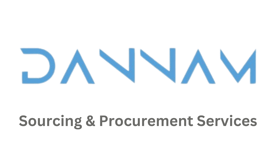BẠN CẦN TÌM BẤT CỨ MÓN GÌ ở Việt Nam và Trung Quốc, HÃY Gửi cho ĐAN NAM HÌNH ẢNH sản phẩM
Procurement Challenges in 2025
Procurement professionals face multiple challenges, including the risk of supply chain disruptions, uncontrolled spending, lack of transparency, difficulties in adapting to new technology, potential fraud, and supplier-related risks.
1/19/20252 phút đọc


Procurement professionals face multiple challenges, including the risk of supply chain disruptions, uncontrolled spending, lack of transparency, difficulties in adapting to new technology, potential fraud, and supplier-related risks.
These problems are so complicated that they cannot be fixed overnight. To address them effectively, companies need teams with diverse expertise that approach organizations as complex, holistic systems, and recognize the value of collaboration.
However, not everyone in procurement is on the same page. In large organizations:
Procurement faces complex supplier ecosystems with various risks such as supply chain disruptions, quality issues, and geopolitical instability. These risks contribute to additional costs in the overall spending of the procurement department, leading to a loss in revenues.
Maverick spending or uncontrolled purchasing outside established procurement processes can lead to inefficiencies, cost overruns, and noncompliance.
Procurement is increasingly under pressure to adopt sustainable procurement practices to reduce environmental impact, enhance corporate social responsibility, and mitigate reputational risks.
The absence of cross-departmental collaboration resulting from isolated procurement practices not only results in redundant work and missed opportunities for optimization, but also introduces inefficiencies.
Smaller organizations face problems as well such as:
Small businesses usually lack sustainability initiatives, but integrating sustainability into procurement processes is increasingly important for enhancing brand reputation and meeting customer expectations.
Small businesses often grapple with limited resources, making the integration of AI into their procurement processes a significant challenge. The investment required for AI implementation, including the costs associated with acquiring AI technologies, training employees, and ensuring compatibility with existing systems, can be daunting for organizations with constrained budgets.
Small businesses may struggle to attract and retain skilled procurement professionals due to competition from larger corporations and resource constraints.
Despite decades of rapid growth in procurement, organizations often struggle to leverage procurement as a strategic function that drives business impact.
How T-Shaped Procurement Professionals Can Solve These Challenges
In many cases, procurement functions suffer from isolation within the organization and even within the procurement department itself. There’s a growing need for procurement professionals who possess deep expertise in their respective procurement disciplines and can effectively collaborate across various disciplines to manage diverse projects.
This emerging breed of procurement talent is often referred to as T-shaped procurement professionals.
T-shaped procurement professionals are characterized by their vertical expertise in specific procurement domains, such as empathic negotiation, analytical and strategic thinking, soft skills, and sustainability. However, they also possess broad cross-functional skills that enable them to collaborate seamlessly with stakeholders from different departments and disciplines.
The T-shaped model is our own idea at Procurement Tactics on the competencies we believe all procurement professionals should have, regardless of their level or position, to be successful in the ever-changing procurement landscape.
Đan Nam Sourcing & Investment
Kho hàng tại Việt Nam: 237/4/36 Hoà Bình, Hiệp Tân, Tân Phú
Kho hàng tại Trung Quốc: Số 3, Công viên Logistics Pintu, Đường Hetang, Thị trấn Jingtang Huadong, Quận Huadu, Quảng Châu, Quảng Đông
MST: 0314659805
LIÊN HỆ
Làm quen với đan nam
contact@dannam-sourcing.com
Zalo/Whatsapp/Wechat: +84 (0) 916030106
Đan Nam Sourcing © 2025
